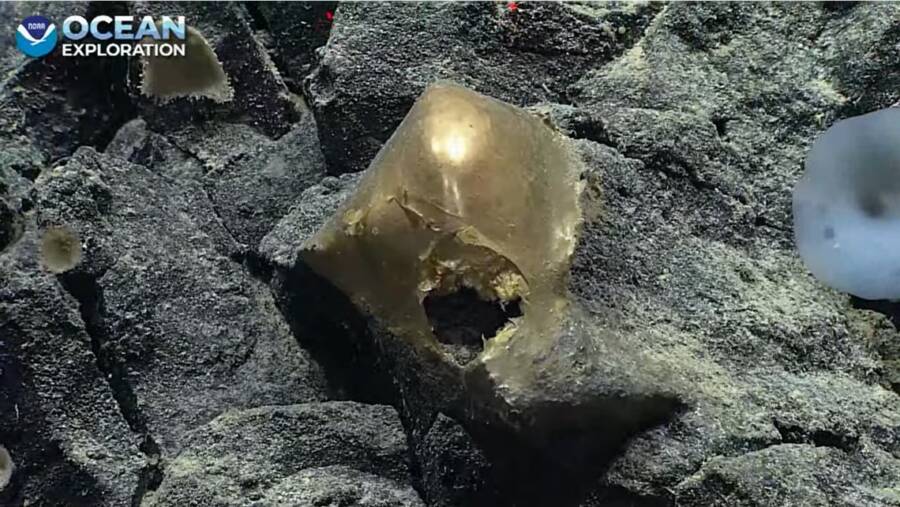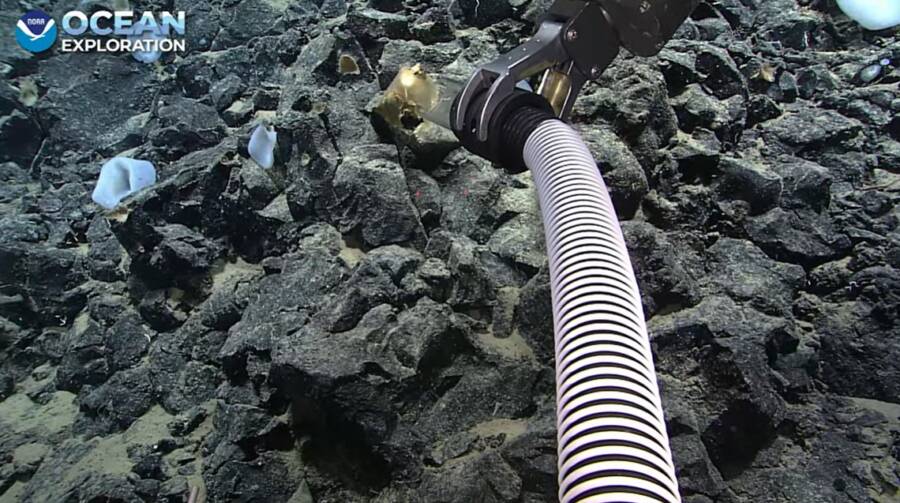Researchers from the National Oceanic and Atmospheric Administration were livestreaming an unmanned expedition along the ocean floor when they spied the strange golden object on some rocks.
NOAAThe mysterious “ golden egg ” divulge off the Alaskan slide .
Earth ’s ocean are full of mysteries , but few are as unsettling as a freshly discovered “ favorable egg ” found on the seafloor off the seashore of Alaska .
A photo of the mysterious shiny object was posted to X ( formerly Twitter ) by the National Oceanic and Atmospheric Administration ( NOAA ) , and it has caused quite a hustle among researcher and X users alike .

NOAAThe mysterious “golden egg” discovered off the Alaskan coast.
Its origination are unknown , but experts have suggested that the golden object may be some sort of egg case or perhaps marine poriferan stay . The NOAA has aver the object is delicate to the touch , much like skin tissue .
allot to theMiami Herald , during the live provender of its discovery , one research worker ominously read , “ Something tried to get in … or to get out . ”
A research team from NOAA first found the foreign gilded aim on Aug. 30 at a depth of roughly two miles in “ the inscrutable abyssal depths of the Gulf of Alaska , ” per theMiami Herald .

NOAAThe robotic arm used to “suction” up the “egg.”
While the squad made joking speculations about the aim ’s pedigree during the live feed , their scientific curiosity eventually led to the decision to pile up a sampling of the golden ball to see its desoxyribonucleic acid .
“ I just hope when we prod it , something does n’t decide to come out , ” one scientist said . “ It ’s like the showtime of a repugnance motion-picture show . ”
NOAAThe robotic branch used to “ suction ” up the “ egg . ”

NOAAA NOAA undersea exploration vehicle.
The team used a remote - operated robotic subdivision to “ tickle ” the egg , which is when they learned it was soft to the touch . Thankfully , nothing freaky or weird pop out , so the team “ suction ” the orb up a tube for closer testing .
Still , once they had it in hand , they could n’t make sense of what they were looking at . Some team members suggested the golden orb may be an egg of some sort ; others speculated that it might be the remains of a sea poriferan .
“ When our collective noesis ca n’t identify it , it ’s something unearthly , ” one team member said . “ What sort of an animal would make an testicle casing like that ? ”
expert across the earthly concern were equally baffled by the strange ball . University of Plymouth deep - sea bionomics professor Kerry Howell separate theDaily Mail , “ In my 20 years exploring the cryptical ocean I have not seen anything like that . ”
Howell agreed with the NOAA team ’s other assumptions about the eyeball , suggest that the opening in it could very well have been where something brood or , in the case of a sea sponge , breathed in and out .
“ There are many , many unexplored mintage in the deep ocean , so this could be connect to a new metal money quite easily , ” she order .
NOAAA NOAA undersea exploration vehicle .
University of Edinburgh prof Murray Roberts also enounce he believes the objective could be an egg casing .
“ Several coinage , include vulnerable thick - sea Pisces like shark and beam , lie their egg cases on seamount or in cold - water coral habitats , ” he said . “ Hence the mess — something brood out and swam off . ”
The uncovering hail as part of NOAA ’s ongoing Seascape Alaska 5 junket , which goes until Sept. 16 . During this period , the authority said its team will bring to “ fill gaps in our sympathy of the region by conducting focussed mathematical function and remotely operate vehicle operations in waters cryptical than 200 meter ( 656 foot ) . ”
Throughout the sashay , the team is exploring rich - sea coral and sponge habitats alongside other underwater geologic features like clay volcano at depth ranging from 656 foot to 19,685 feet .
After read about this odd new find , register about seven othersea creaturesthat look like something from a revulsion movie . Or , study about another localisation on the seafloor , Challenger Deep , the deepest part of the ocean .